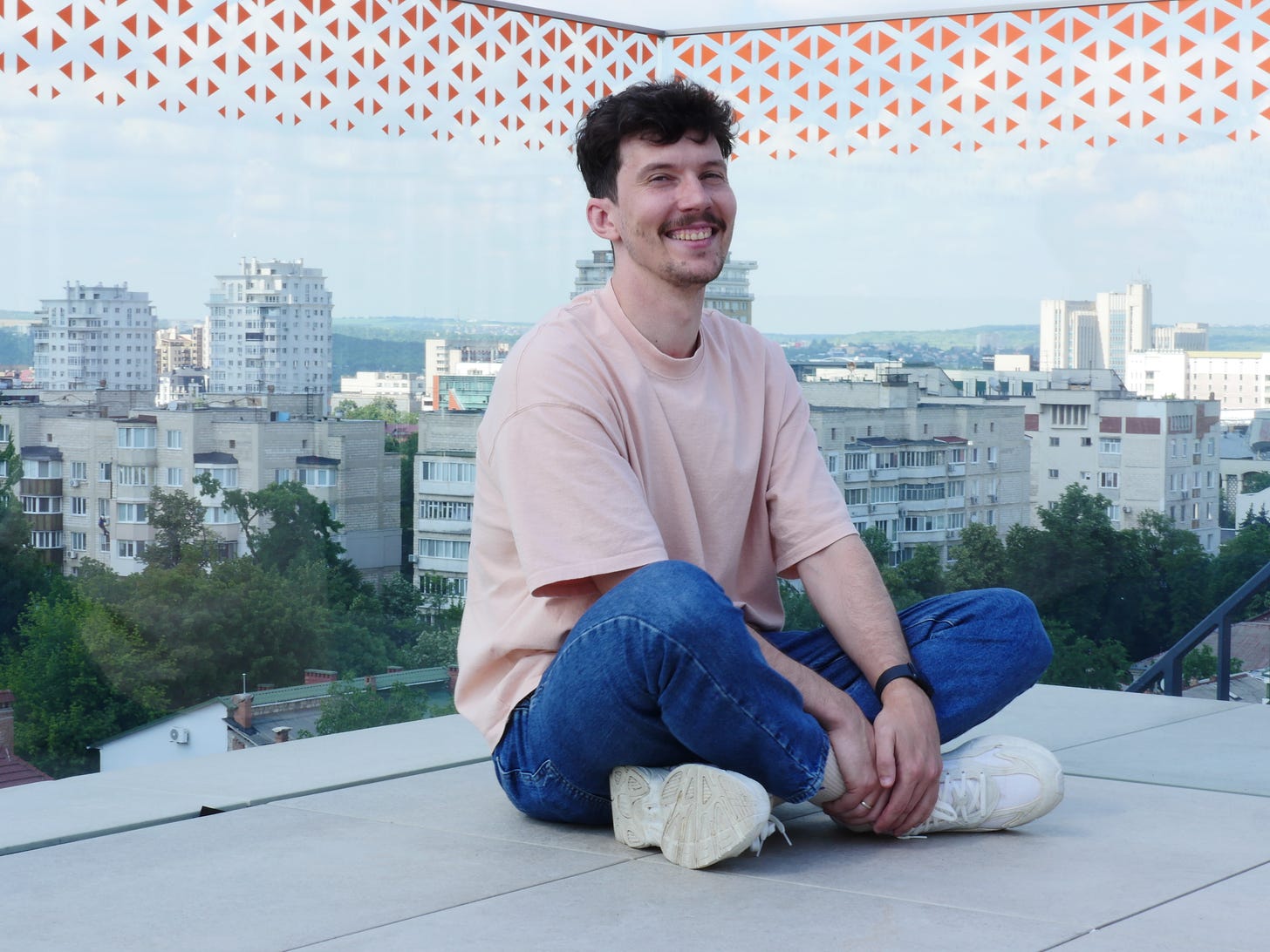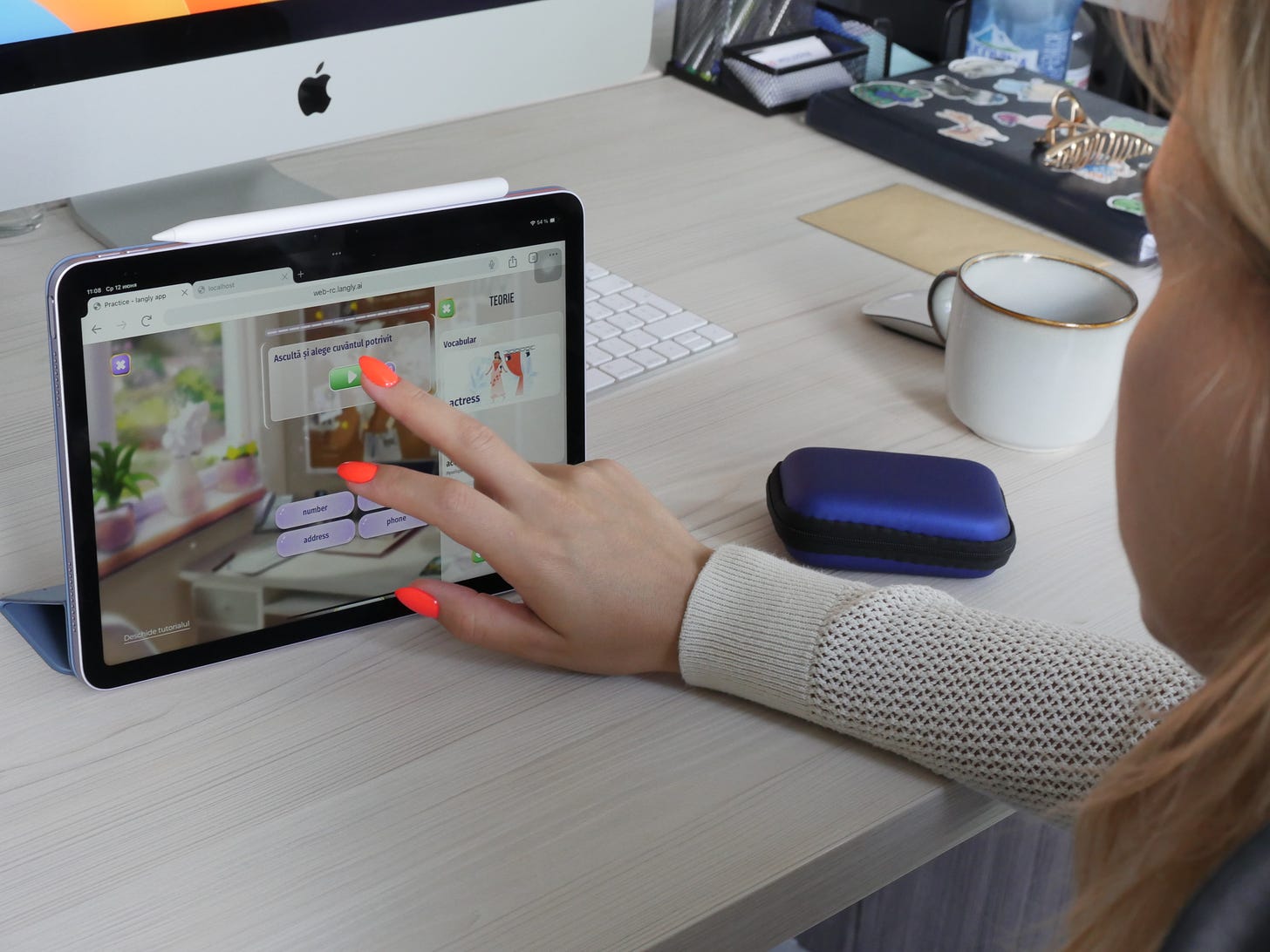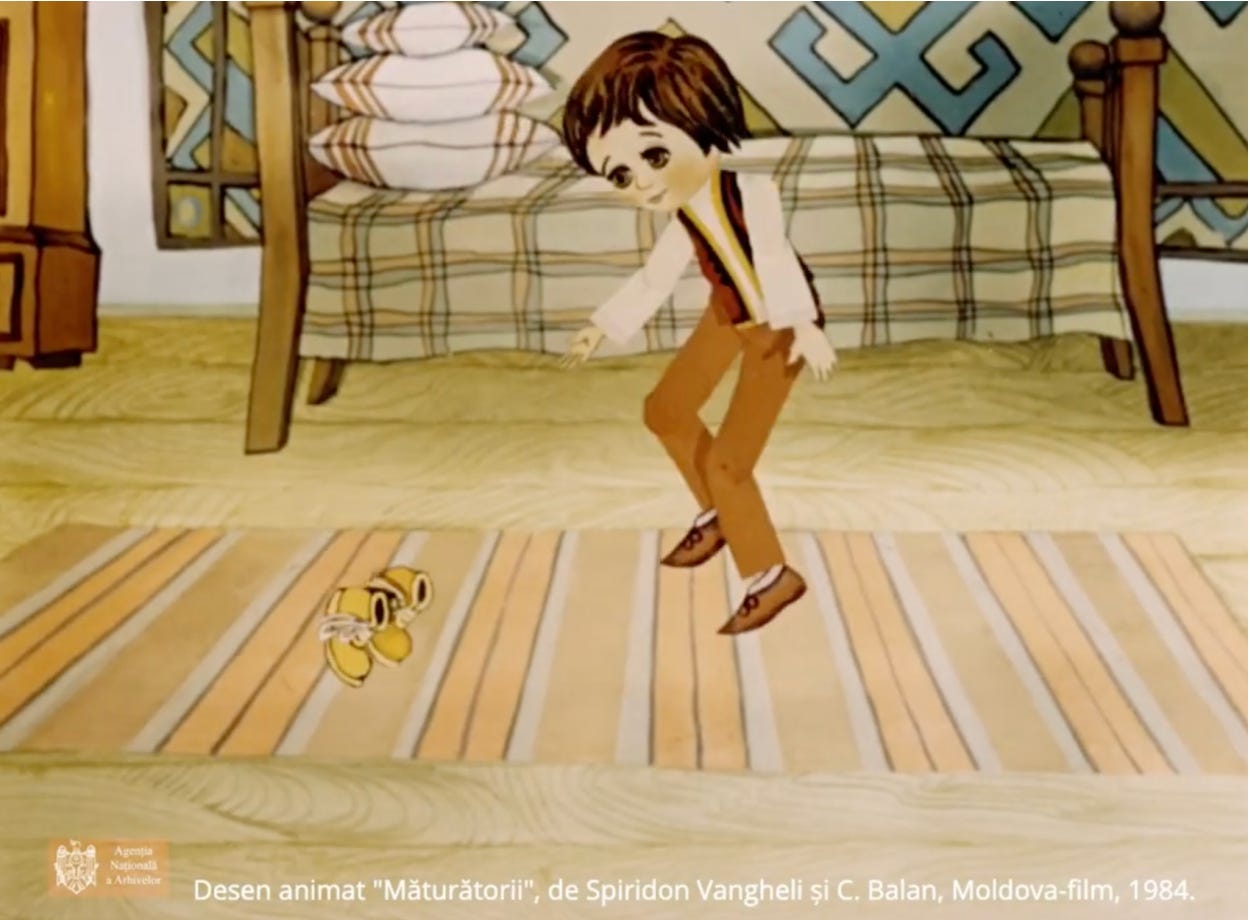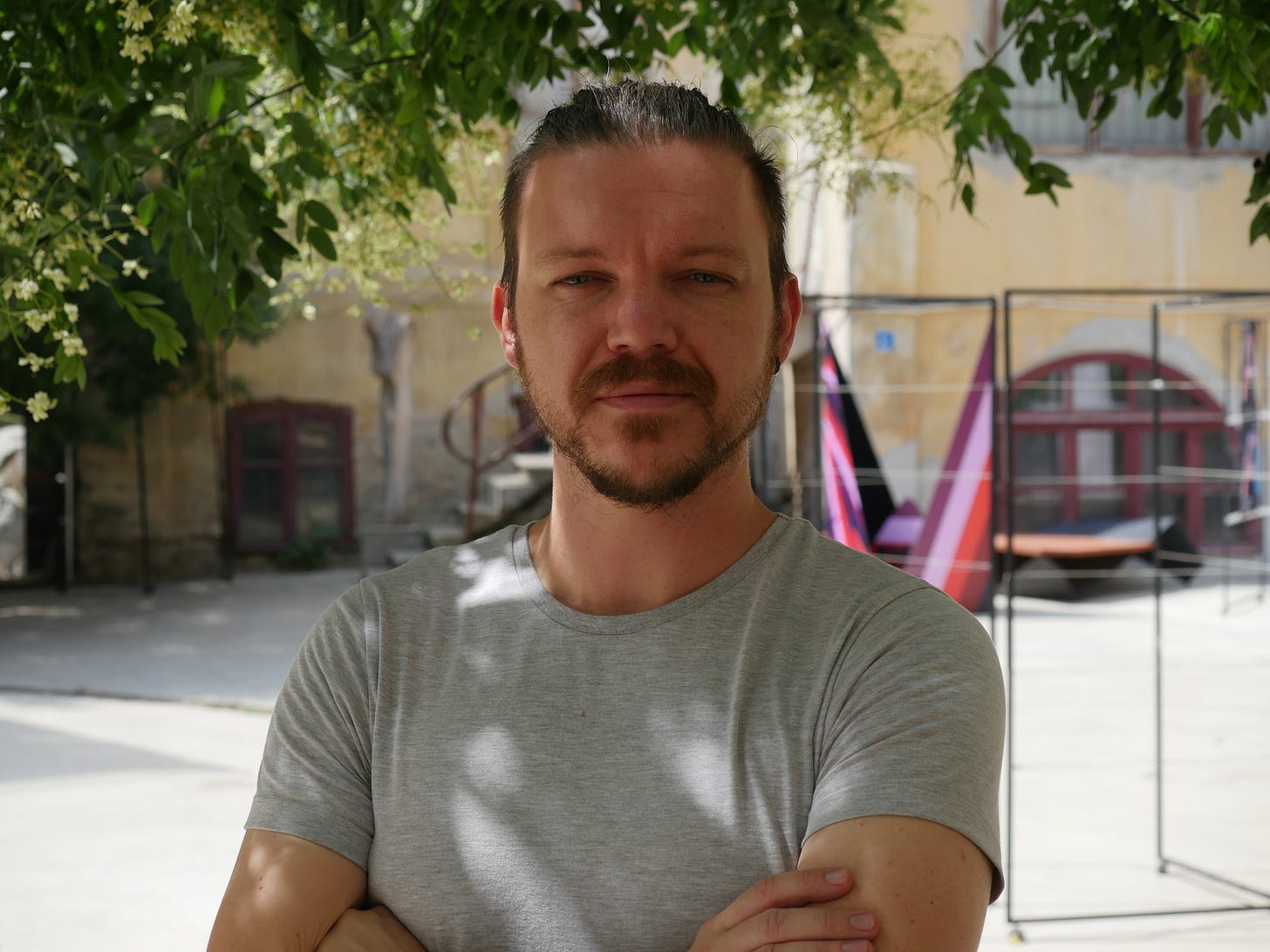Everybody loves cartoons. Especially Moldovans, these days
Journo Birds: September 10, 2024
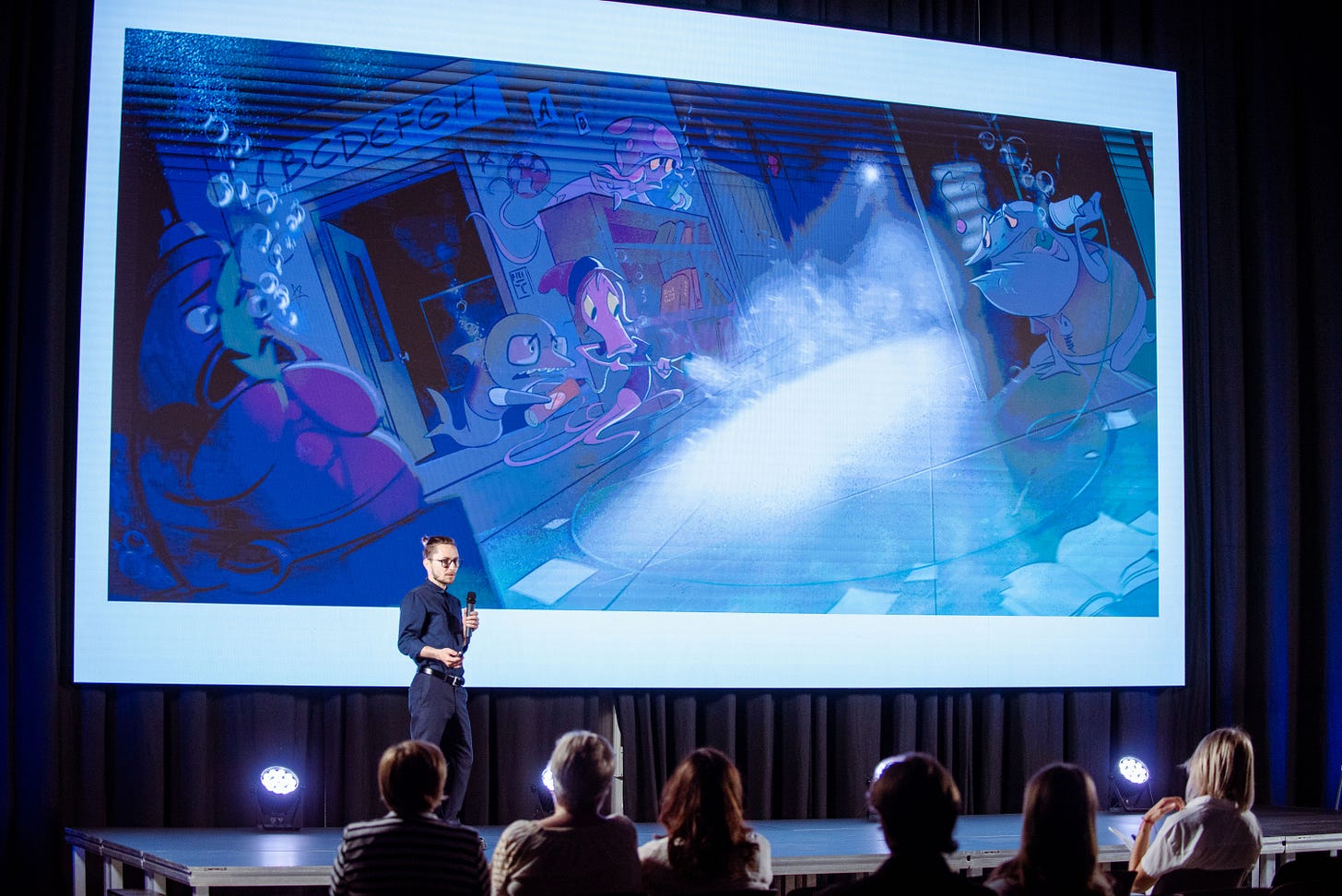
Only in the past two years have young Moldovans been able to formally study animation.
This is not how you would imagine Moldova's capital. We are standing on the rooftop in the middle of Chisinau, and the wind plays with our hair. Crunchyroll, the ultimate brand for all things anime with roots in the U.S., chose Moldova as one of its 16 offices around the globe. The one in Chisinau is Crunchyroll’s second biggest outside of the U.S.
In addition to getting to work with fun, passionate, and inspired colleagues, the team at Crunchyroll in Moldova also enjoys benefits and perks and has been awarded as one of the best employers in Moldova. “Animation will make Moldova better!” Igor Canonic, Crunchyroll's art director, is convinced. “It's really fun!”
It does feel like a lot of fun here. In Igor's view, animation tests your limits, teaches you to solve problems and keeps young people off the streets.
Is Moldova the next promised land for moving pictures?
That's ironic because Moldova didn't even have animation programs two years ago. That clearly wasn't an obstacle. “In Moldova, people do a lot of stuff by themselves,” Igor explained. “They learn everything on YouTube.” That's how Igor studied animation. “I didn't have any other choice!” he explains, spreading his hands. In his view, there aren't many opportunities in Moldova to be creative. “Animation is one way for Moldovans to express themselves.”
Changing how we learn
At Tekwill, near the Technological University, another group of animation lovers is working on a web application on the city's outskirts. Langly teaches English using Oxford methodology so that what you learn on the app can be integrated into the education system. Students can assess whether they have A1 or C3 levels.
As you may have guessed, the application's cornerstone is animation. To keep their roughly 90,000 users engaged, “we want to differ, to make it memorable,” Langly's co-founder Natalia Sleptov said. She proudly explains how an actual artist and not AI create their characters. “We make it with soul!” she says with a broad smile.
How do they make this heartfelt animation? They, too, use Google and YouTube to learn.
In Natalia's view, the animation industry is growing in Moldova. The war boosted the area even more as Ukrainian specialists crossed the border with their know-how.
The new rise is coming
“I would call it a new rise of the animation industry,” said Lev Voloshin, one of the leading forces behind Moldova's new wave of animation. He explains that during the Soviet Union, Moldovans would study animation in Moscow and return with their knowledge. The industry was thriving.
After the collapse of the Soviet Union, the field held on purely on enthusiasm until smaller animation studios opened up. These studios had their in-house training.
During his studies at the Academy of Art, Voloshin spent his mornings studying and his evenings working at Simpals, an animation studio. He learned everything about traditional animation from his Turkmen mentor, Serdar Djumaev.
In-house animation training can be inefficient, though. They take a lot of time and effort, and only some ten percent are employed by the studio in Voloshin's experience. In 2021, with the support of the Ministry of Education, the United States International Development Agency (USAID) funded the “Future Professions” project to support education in university programs such as animation, the game industry, and multimedia.
Voloshin was invited to create the study programs and be part of creating Moldova's first animation faculties for three universities: the Technical University of Moldova, Ion Creanga Pedagogical University, and Moldova's Academy of Music, Theater, and Fine Arts. “It was a crazy, scary, and hard time,” he remembers. Each program differs: Ion Creanga's program is more for those interested in advertisement or teaching animation, while the Technical University emphasizes animated movies and the game industry more.
In his view, the hardest part of teaching is not technical. The programs and tools are constantly changing; anyone can learn them online. The real challenge is storytelling and understanding the “physics of the drama,” as Lev calls it. “We have the passion for animation but not enough people,” Lev concludes. “That's why we need to focus on creativity and storytelling.” Moldova couldn't compete with the vast number of specialists coming up in Asia.
I joined him in one session with three second-year animation students. Sitting around the table in a modern grey room at a creative media technology hub, Mediacor, they showed Lev what they'd created. Some were nervously twitching fingers.
“This year was quite hard and nerve-wracking,” Valeria, one of Moldova’s first animation students, says. “But we have a great group of students!”
They tell me their professors learned animation by themselves or studied abroad. Ana was ready to move abroad, too, but she heard about the new animation faculty at the Technical University of Moldova. So she stayed but is worried about the competition in the animation field once she graduates.
The first awards are coming in already. In May this year, Moldovan director Oleg Condrea won the Cannes Film Festival’s “Cannes 7th Art Awards” for the best script for the dramatic short film “Tangled Tails.” It’s about a wise dog who faces serious problems. In Moldova, animation is more accessible than making movies, Condrea told me. No need for actors or studios, high mountaintops, or the ocean. A great idea is enough. And if you make it in English - it can become an international movie! “It opens the stage for the market and a bigger arena for the audience,” Condrea explained. “You have more tools to connect with people.”
Growing up in Moldova, with limited opportunities, young people had to find ways to get creative. Condrea was a skateboarder, but there were no skateparks in Moldova’s capital when he grew up. So he and his friends used to build obstacles or use stairs and anything they found in the city to do sports. “So when I came into animation, I did the same: just used what I could,” Oleg said. He was learning on his own and from mentors.
Lev believes that if all this passion for animation is turned into great stories, then one day, Moldova could become “the Moldovawood of animation.” That's his secret dream. Why? Lev quickly answers: “Because everybody loves animation.”
This article is written by Journo Birds. Moldova Matters is collaborating with this team of journalists to share their stories about Moldovan culture and life. You can follow Journo Birds directly on Instagram, Facebook, YouTube or their website.




